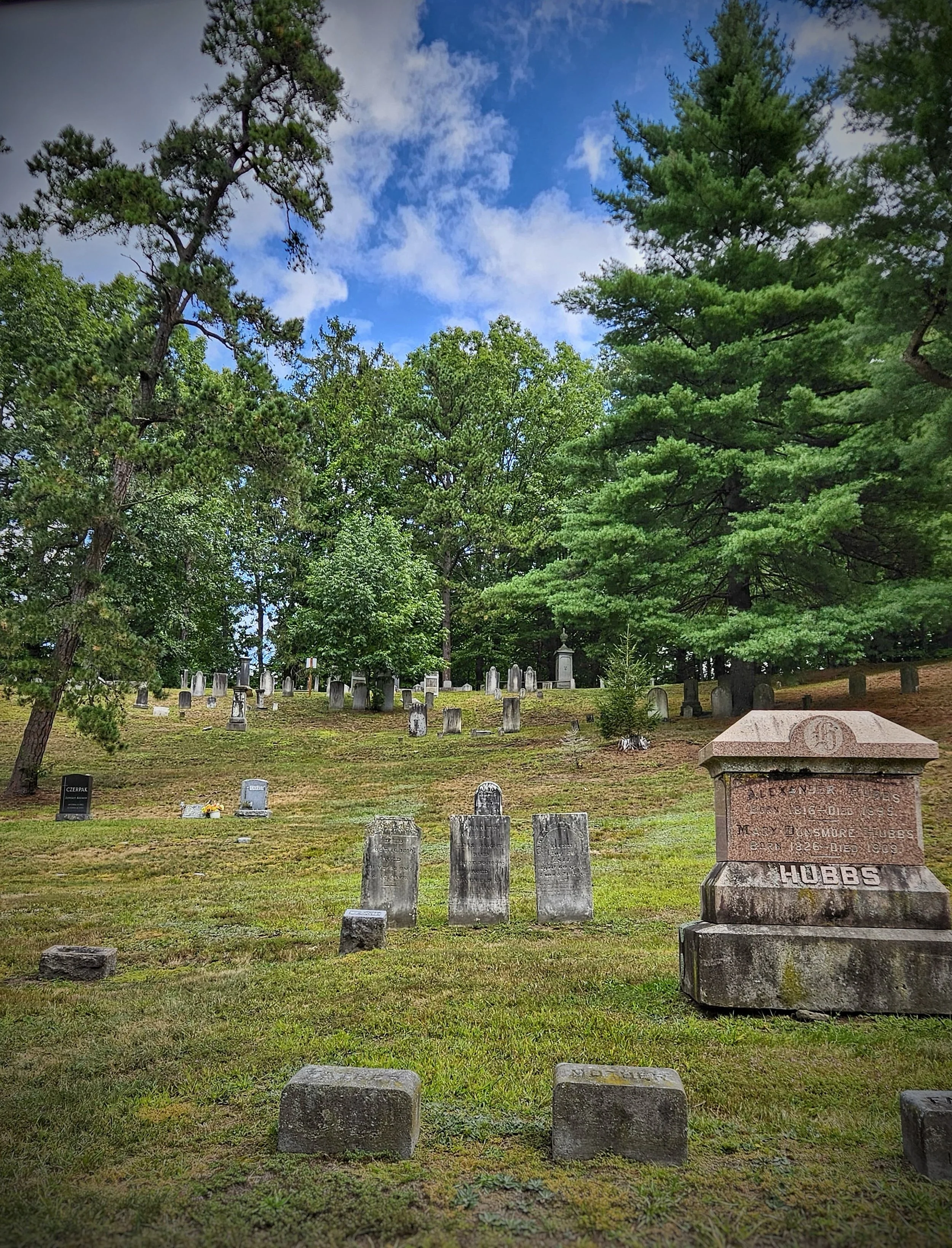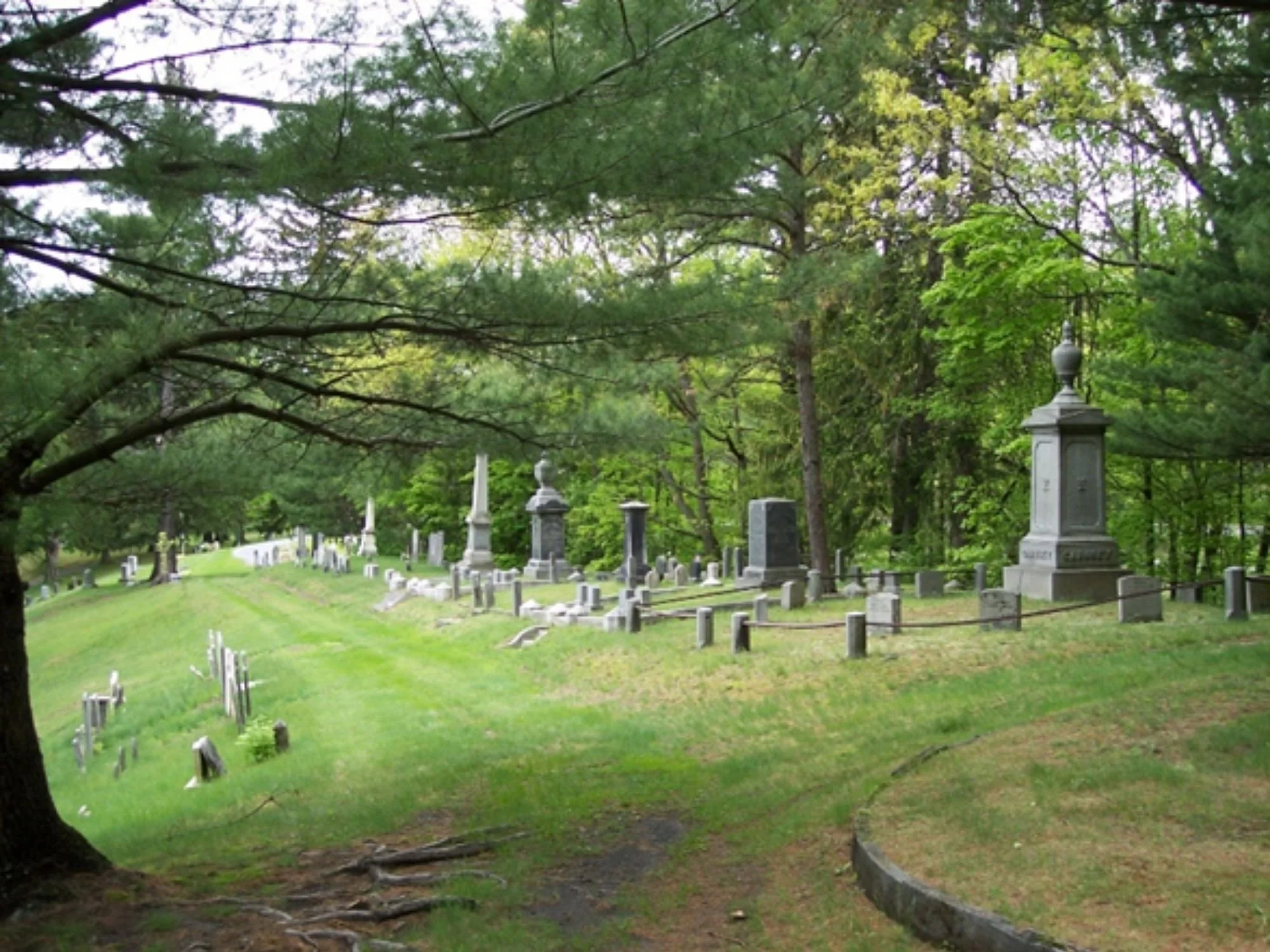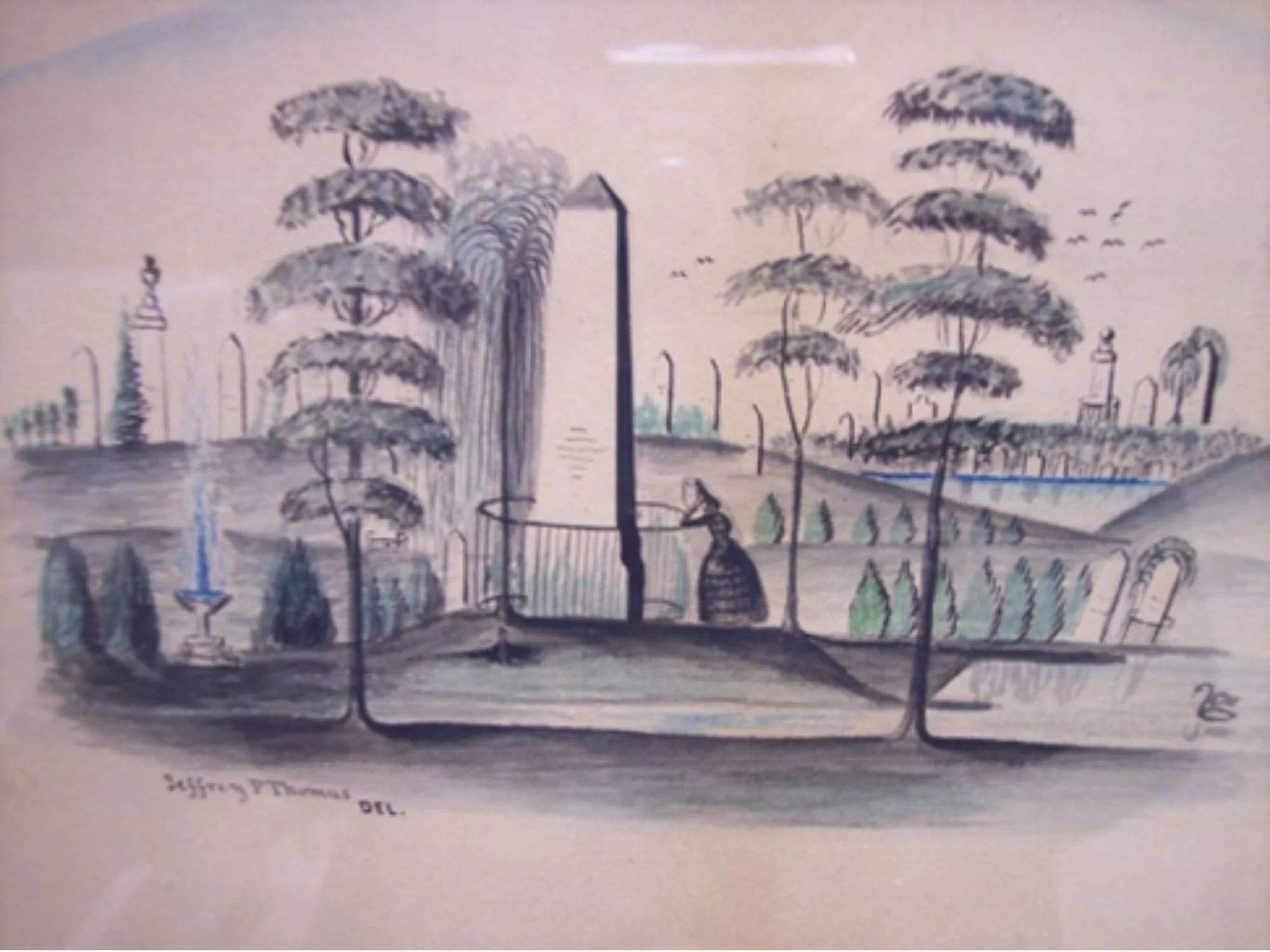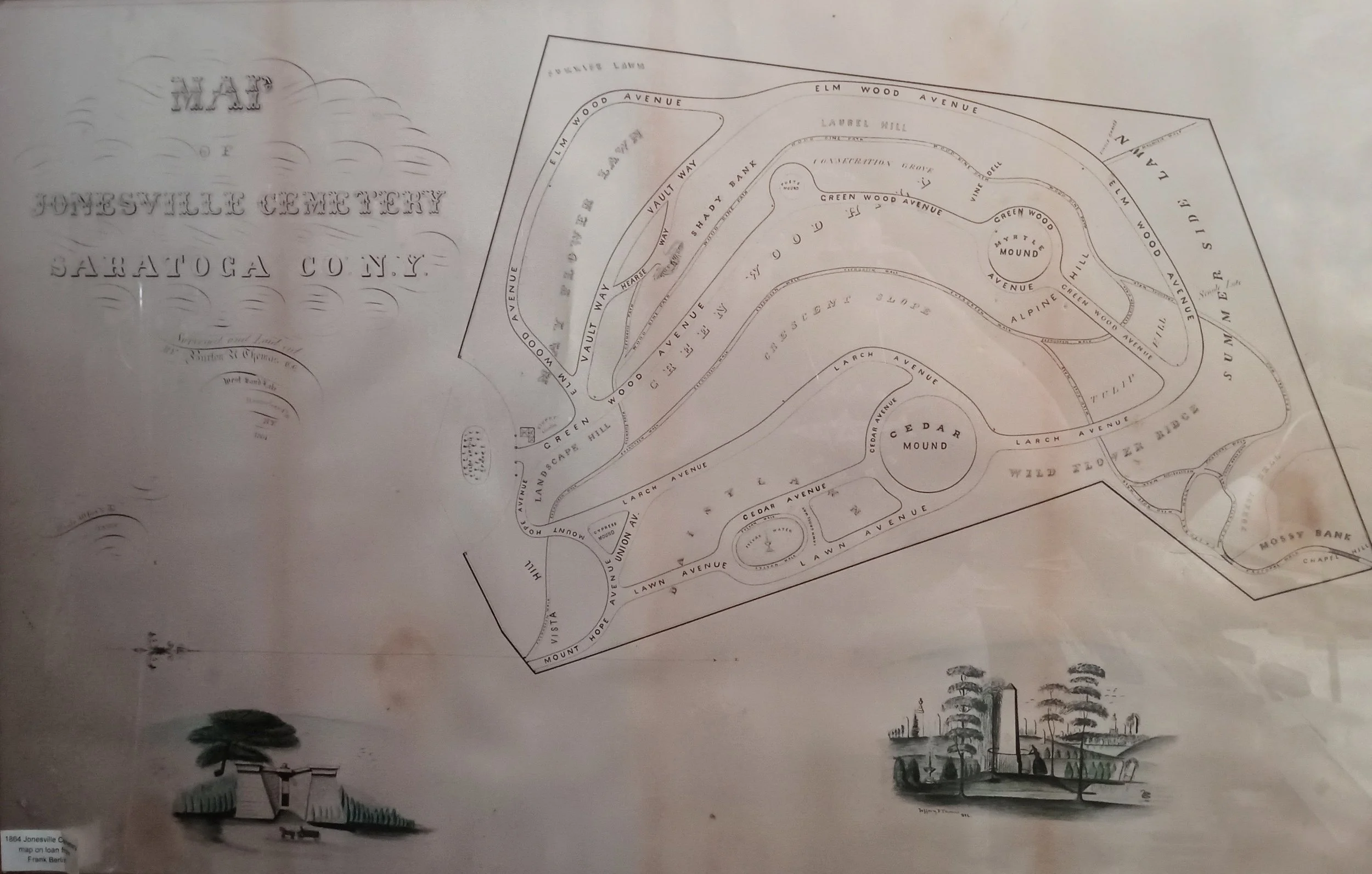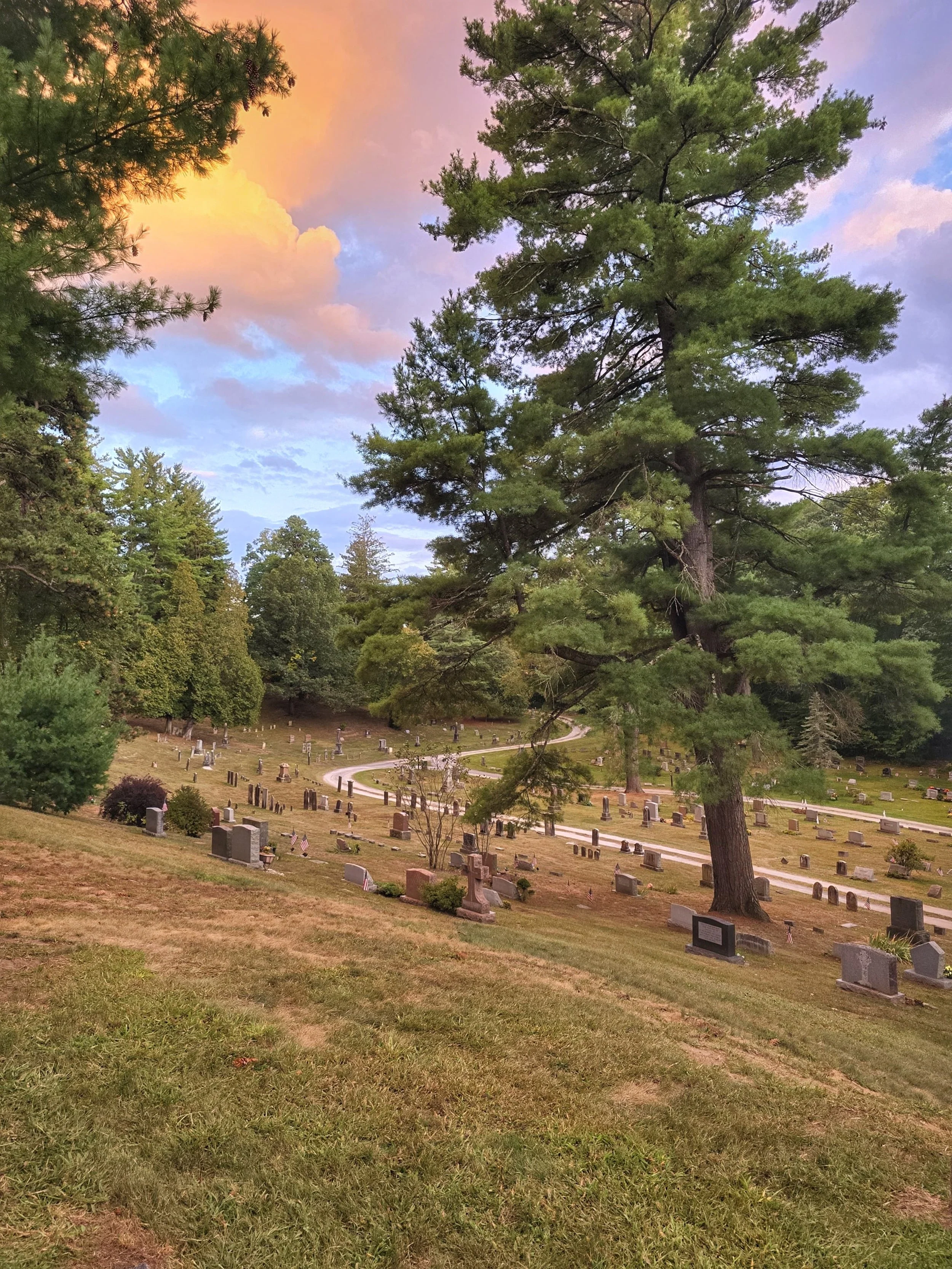
Jonesville Cemetery: A Living Record of Community History
Jonesville Cemetery has been a place of remembrance and heritage for over 150 years. Established in 1864 and designed by Burton Arnold Thomas, a renowned civil engineer and landscape architect, the cemetery reflects the ideals of the 19th-century rural cemetery movement—a movement that reshaped burial traditions across Europe and America. With its winding paths, shaded hillsides, and thoughtfully designed plots, Jonesville Cemetery embodies both beauty and history.
Visitors will also find the grave of James Jones, proprietor of the Jonesville Hotel and the man for whom the hamlet is named. Not far away stands the monument of Robert W. Van Patten, known as the “Father of Clifton Park” for his role in the town’s suburban development during the 20th century. These names, along with the Garnsey and Kennedy families and countless others, speak to the cemetery’s role as a collective memory of the region.
The landscape itself reflects Thomas’s design philosophy—romantic in its English-inspired style, practical in its clear layout, and contemplative in its quiet beauty. The original map, dated 1864 and signed by Thomas’s son, hangs today in the Clifton Park–Halfmoon Library, testifying to the cemetery’s careful planning.
On the Hill of the Jonesville Cemetery showing the family plots of the Garnseys and Kennedys
Soon after its founding, 252 graves from the older Union Grove Cemetery were relocated here, bringing with them headstones that reach as far back as 1799, including the stone of Jemima Hubbs. These early markers remain alongside later family monuments, offering a visible timeline of the community’s growth. The cemetery’s first board of directors—Roscius R. Kennedy, Samuel Langdon, Garnsey Kennedy, Morgan L. Finch, Alexander Hubbs, and John Higgins—rest here themselves, establishing a lasting legacy of stewardship.
The grounds are the resting place of farmers, teachers, business leaders, and veterans. More than one hundred veterans from America’s conflicts, from the Civil War through Vietnam, are interred here. Among them are George Washington Cornell and David H. Dater, two young friends from Jonesville who both served with the 77th Regiment during the Civil War and died of illness while returning home in 1862. Their story, like many others, anchors national history within this small community.
Watercolor illustration from the map of the Jonesville Cemetery, drawn by Jeffery Thomas, 1864
In 2006, the Jonesville Cemetery Association honored this history with an open house and the dedication of a new fence, replacing the 1910 iron fence. Civil War re-enactors saluted the soldiers laid to rest here, and visitors toured the grounds, viewed original documents, and even purchased pieces of the old fence as mementos.
In recognition of its cultural and historical significance, Jonesville Cemetery was added to the National Register of Historic Places in 2014. Today, spanning 11.2 acres, it remains an active burial ground and a place where memory, history, and community continue to meet.
Map of the Jonesville Rural Cemetery, Drawn by Jeffery Thomas, 1864

